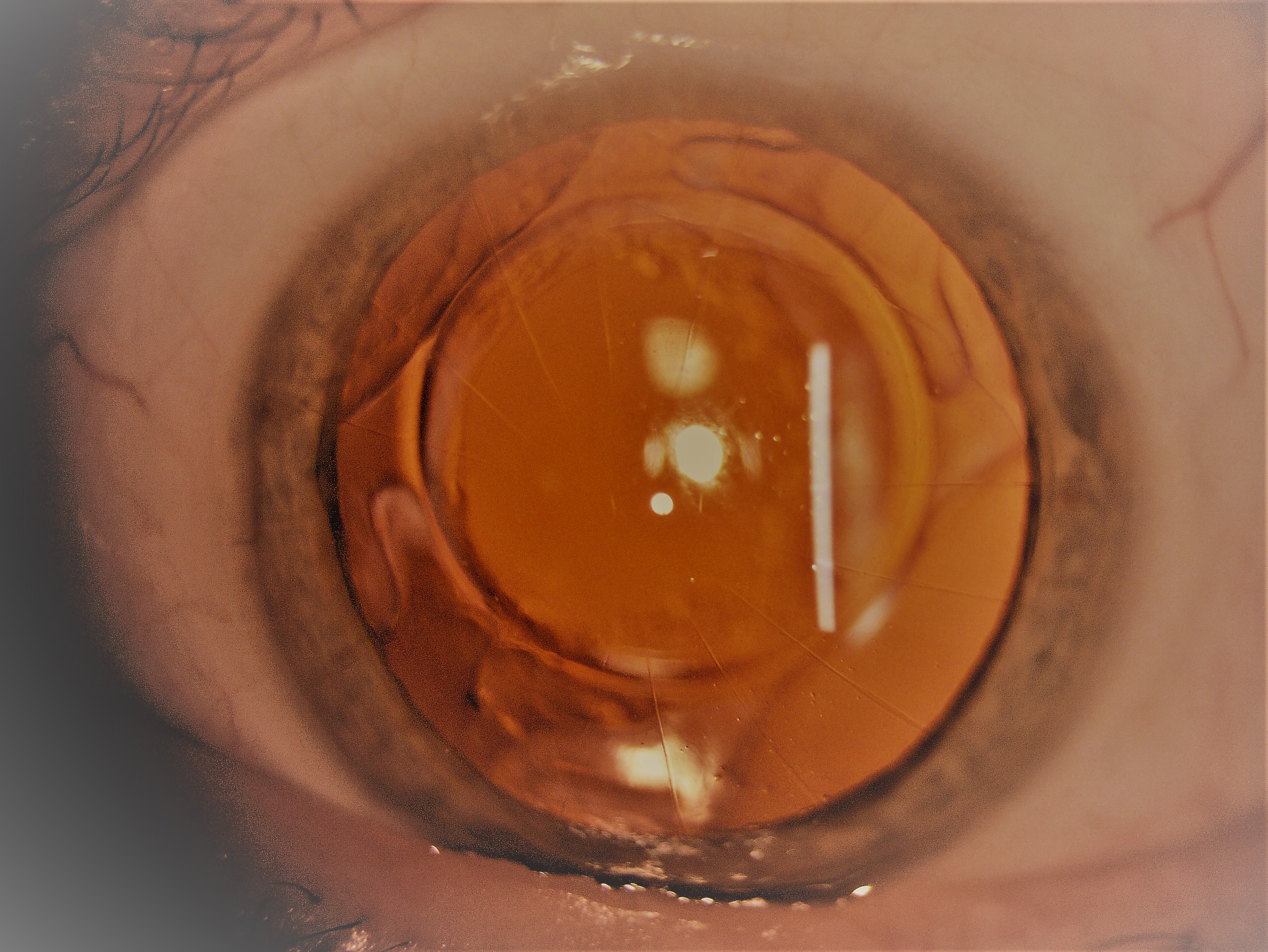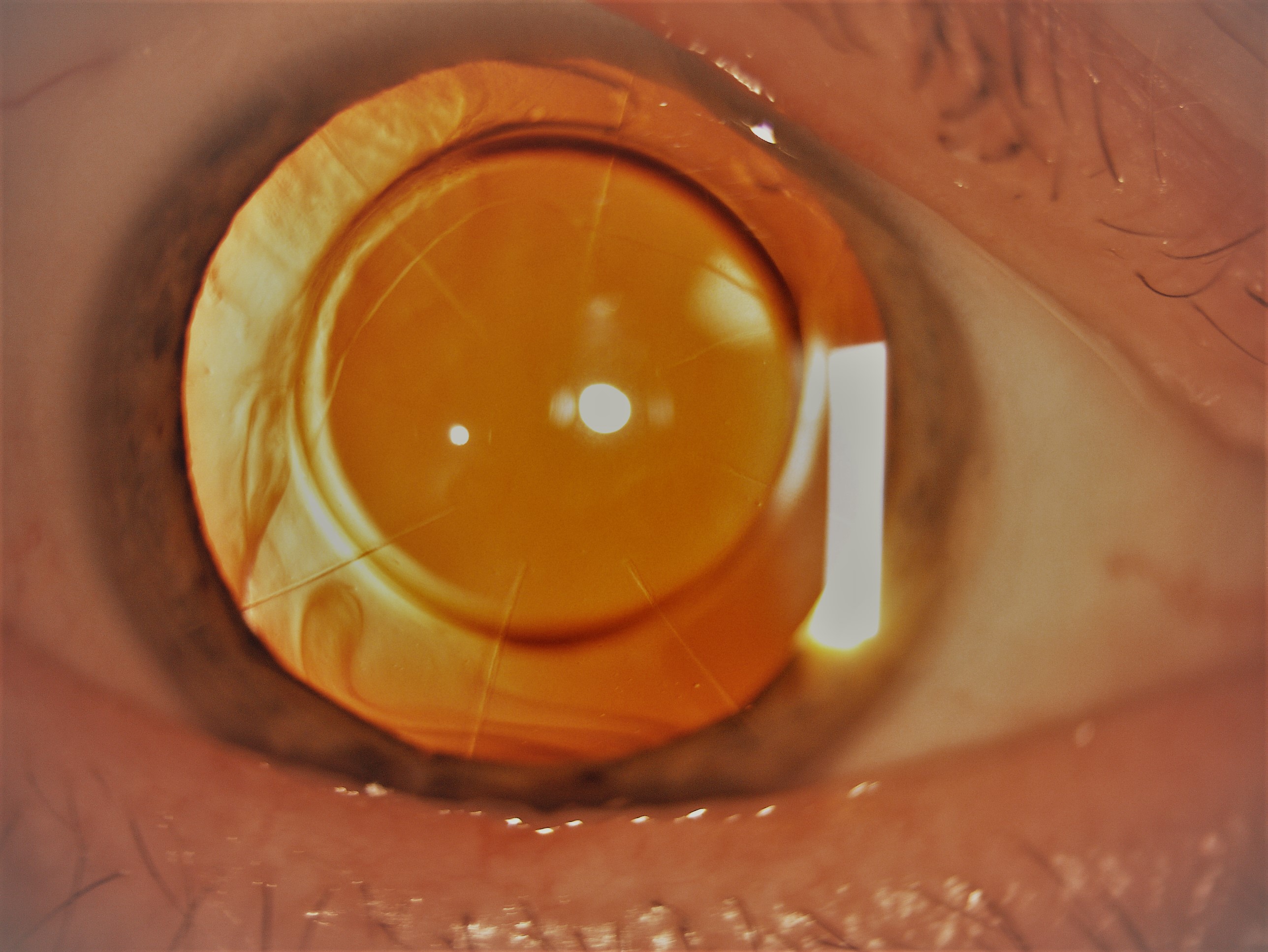[1]
Rowsey JJ, Morley WA. Surgical correction of moderate myopia: which method should you choose? I. Radial keratotomy will always have a place. Survey of ophthalmology. 1998 Sep-Oct:43(2):147-56
[PubMed PMID: 9763139]
Level 3 (low-level) evidence
[2]
SATO T. Posterior incision of cornea; surgical treatment for conical cornea and astigmatism. American journal of ophthalmology. 1950 Jun:33(6):943-8
[PubMed PMID: 15419252]
[3]
Beatty RF, Smith RE. 30-year follow-up of posterior radial keratotomy. American journal of ophthalmology. 1987 Mar 15:103(3 Pt 1):330-1
[PubMed PMID: 3826240]
[4]
Fyodorov SN, Durnev VV. Operation of dosaged dissection of corneal circular ligament in cases of myopia of mild degree. Annals of ophthalmology. 1979 Dec:11(12):1885-90
[PubMed PMID: 556142]
Level 3 (low-level) evidence
[5]
Beliaev VS, Il'ina TS. [Scleroplasty in the treatment of progressive myopia]. Vestnik oftalmologii. 1972:3():60-3
[PubMed PMID: 5049984]
[6]
Enaliev FS. [Surgical treatment experience in myopia]. Vestnik oftalmologii. 1979 May-Jun:(3):52-5
[PubMed PMID: 462698]
[7]
Sawelson H, Marks RG. Two-year results of radial keratotomy. Archives of ophthalmology (Chicago, Ill. : 1960). 1985 Apr:103(4):505-10
[PubMed PMID: 3985827]
[8]
Bores LD, Myers W, Cowden J. Radial keratotomy: an analysis of the American experience. Annals of ophthalmology. 1981 Aug:13(8):941-8
[PubMed PMID: 7294635]
[9]
Bores LD. Radial keratotomy. I. A safe, effective way to correct a handicap. Survey of ophthalmology. 1983 Sep-Oct:28(2):101-5
[PubMed PMID: 6648792]
Level 3 (low-level) evidence
[10]
Cowden JW. Radial keratotomy. A retrospective study of cases observed at the Kresge Eye Institute for six months. Archives of ophthalmology (Chicago, Ill. : 1960). 1982 Apr:100(4):578-80
[PubMed PMID: 7073568]
Level 2 (mid-level) evidence
[11]
Waring GO 3rd, Moffitt SD, Gelender H, Laibson PR, Lindstrom RL, Myers WD, Obstbaum SA, Rowsey JJ, Safir A, Schanzlin DJ, Bourque LB. Rationale for and design of the National Eye Institute Prospective Evaluation of Radial Keratotomy (PERK) Study. Ophthalmology. 1983 Jan:90(1):40-58
[PubMed PMID: 6338438]
[12]
Feizi S, Jafarinasab MR, Karimian F, Hasanpour H, Masudi A. Central and peripheral corneal thickness measurement in normal and keratoconic eyes using three corneal pachymeters. Journal of ophthalmic & vision research. 2014 Jul-Sep:9(3):296-304. doi: 10.4103/2008-322X.143356. Epub
[PubMed PMID: 25667728]
[13]
Marfurt CF, Cox J, Deek S, Dvorscak L. Anatomy of the human corneal innervation. Experimental eye research. 2010 Apr:90(4):478-92. doi: 10.1016/j.exer.2009.12.010. Epub 2009 Dec 29
[PubMed PMID: 20036654]
[14]
Saghizadeh M, Kramerov AA, Svendsen CN, Ljubimov AV. Concise Review: Stem Cells for Corneal Wound Healing. Stem cells (Dayton, Ohio). 2017 Oct:35(10):2105-2114. doi: 10.1002/stem.2667. Epub 2017 Jul 26
[PubMed PMID: 28748596]
[15]
Khaled ML, Helwa I, Drewry M, Seremwe M, Estes A, Liu Y. Molecular and Histopathological Changes Associated with Keratoconus. BioMed research international. 2017:2017():7803029. doi: 10.1155/2017/7803029. Epub 2017 Jan 30
[PubMed PMID: 28251158]
[16]
Levy SG, Moss J, Sawada H, Dopping-Hepenstal PJ, McCartney AC. The composition of wide-spaced collagen in normal and diseased Descemet's membrane. Current eye research. 1996 Jan:15(1):45-52
[PubMed PMID: 8631203]
[18]
Salz JJ, Lee T, Jester JV, Villaseñor RA, Steel D, Bernstein J, Smith RE. Analysis of incision depth following experimental radial keratotomy. Ophthalmology. 1983 Jun:90(6):655-9
[PubMed PMID: 6888859]
[19]
Sutton G, Lawless M, Hodge C. Laser in situ keratomileusis in 2012: a review. Clinical & experimental optometry. 2014 Jan:97(1):18-29. doi: 10.1111/cxo.12075. Epub 2013 Jun 21
[PubMed PMID: 23786377]
[20]
Boxer Wachler BS, Durrie DS, Assil KK, Krueger RR. Improvement of visual function with glare testing after photorefractive keratectomy and radial keratotomy. American journal of ophthalmology. 1999 Nov:128(5):582-7
[PubMed PMID: 10577525]
[21]
Maloley LA, Razeghinejad MR, Havens SJ, Gulati V, Fan S, High R, Ghate DA. Pneumotonometer Accuracy Using Manometric Measurements after Radial Keratotomy, Clear Corneal Incisions and Lamellar Dissection in Porcine Eyes. Current eye research. 2020 Jan:45(1):1-6. doi: 10.1080/02713683.2019.1652915. Epub 2019 Aug 22
[PubMed PMID: 31380714]
[22]
Wilkinson JM, Cozine EW, Kahn AR. Refractive Eye Surgery: Helping Patients Make Informed Decisions About LASIK. American family physician. 2017 May 15:95(10):637-644
[PubMed PMID: 28671403]
[23]
Grandon SC, Sanders DR, Anello RD, Jacobs D, Biscaro M. Clinical evaluation of hexagonal keratotomy for the treatment of primary hyperopia. Journal of cataract and refractive surgery. 1995 Mar:21(2):140-9
[PubMed PMID: 7791053]
[24]
Melles GR, Binder PS. Effect of radial keratotomy incision direction on wound depth. Refractive & corneal surgery. 1990 Nov-Dec:6(6):394-403
[PubMed PMID: 2076416]
[25]
Lindstrom RL. Minimally invasive radial keratotomy: mini-RK. Journal of cataract and refractive surgery. 1995 Jan:21(1):27-34
[PubMed PMID: 7722894]
[26]
Thornton SP. Astigmatic keratotomy: a review of basic concepts with case reports. Journal of cataract and refractive surgery. 1990 Jul:16(4):430-5
[PubMed PMID: 2199665]
Level 3 (low-level) evidence
[27]
Faktorovich EG, Maloney RK, Price FW Jr. Effect of astigmatic keratotomy on spherical equivalent: results of the Astigmatism Reduction Clinical Trial. American journal of ophthalmology. 1999 Mar:127(3):260-9
[PubMed PMID: 10088734]
[28]
Oshika T, Shimazaki J, Yoshitomi F, Oki K, Sakabe I, Matsuda S, Shiwa T, Fukuyama M, Hara Y. Arcuate keratotomy to treat corneal astigmatism after cataract surgery: a prospective evaluation of predictability and effectiveness. Ophthalmology. 1998 Nov:105(11):2012-6
[PubMed PMID: 9818598]
[29]
Poole TR, Ficker LA. Astigmatic keratotomy for post-keratoplasty astigmatism. Journal of cataract and refractive surgery. 2006 Jul:32(7):1175-9
[PubMed PMID: 16857505]
[30]
Budak K, Yilmaz G, Aslan BS, Duman S. Limbal relaxing incisions in congenital astigmatism: 6 month follow-up. Journal of cataract and refractive surgery. 2001 May:27(5):715-9
[PubMed PMID: 11377902]
[31]
Kumar NL, Kaiserman I, Shehadeh-Mashor R, Sansanayudh W, Ritenour R, Rootman DS. IntraLase-enabled astigmatic keratotomy for post-keratoplasty astigmatism: on-axis vector analysis. Ophthalmology. 2010 Jun:117(6):1228-1235.e1. doi: 10.1016/j.ophtha.2009.10.041. Epub 2010 Feb 16
[PubMed PMID: 20163860]
[32]
Lim CW, Somani S, Chiu HH, Maini R, Tam ES. Astigmatic Outcomes of Single, Non-Paired Intrastromal Limbal Relaxing Incisions During Femtosecond Laser-Assisted Cataract Surgery Based on a Custom Nomogram. Clinical ophthalmology (Auckland, N.Z.). 2020:14():1059-1070. doi: 10.2147/OPTH.S238016. Epub 2020 Apr 22
[PubMed PMID: 32368004]
[33]
Beldavs RA, al-Ghamdi S, Wilson LA, Waring GO 3rd. Bilateral microbial keratitis after radial keratotomy. Archives of ophthalmology (Chicago, Ill. : 1960). 1993 Apr:111(4):440
[PubMed PMID: 8470970]
[34]
Maskin SL, Alfonso E. Fungal keratitis after radial keratotomy. American journal of ophthalmology. 1992 Sep 15:114(3):369-70
[PubMed PMID: 1524133]
[35]
Gelender H, Flynn HW Jr, Mandelbaum SH. Bacterial endophthalmitis resulting from radial keratotomy. American journal of ophthalmology. 1982 Mar:93(3):323-6
[PubMed PMID: 6978616]
[36]
Rashid ER, Waring GO 3rd. Complications of radial and transverse keratotomy. Survey of ophthalmology. 1989 Sep-Oct:34(2):73-106
[PubMed PMID: 2686058]
Level 3 (low-level) evidence
[37]
McDermott ML, Wilkinson WS, Tukel DB, Madion MP, Cowden JW, Puklin JE. Corneoscleral rupture ten years after radial keratotomy. American journal of ophthalmology. 1990 Nov 15:110(5):575-7
[PubMed PMID: 2240150]
[38]
Waring GO 3rd, Lynn MJ, Nizam A, Kutner MH, Cowden JW, Culbertson W, Laibson PR, McDonald MB, Nelson JD, Obstbaum SA. Results of the Prospective Evaluation of Radial Keratotomy (PERK) Study five years after surgery. The Perk Study Group. Ophthalmology. 1991 Aug:98(8):1164-76
[PubMed PMID: 1923352]
[39]
Applegate RA, Howland HC, Sharp RP, Cottingham AJ, Yee RW. Corneal aberrations and visual performance after radial keratotomy. Journal of refractive surgery (Thorofare, N.J. : 1995). 1998 Jul-Aug:14(4):397-407
[PubMed PMID: 9699163]
[40]
Waring GO 3rd, Lynn MJ, McDonnell PJ. Results of the prospective evaluation of radial keratotomy (PERK) study 10 years after surgery. Archives of ophthalmology (Chicago, Ill. : 1960). 1994 Oct:112(10):1298-308
[PubMed PMID: 7945032]
[41]
Kemp JR, Martinez CE, Klyce SD, Coorpender SJ, McDonald MB, Lucci L, Lynn MJ, Waring GO 3rd. Diurnal fluctuations in corneal topography 10 years after radial keratotomy in the Prospective Evaluation of Radial Keratotomy Study. Journal of cataract and refractive surgery. 1999 Jul:25(7):904-10
[PubMed PMID: 10404364]
[42]
Turnbull AMJ, Crawford GJ, Barrett GD. Methods for Intraocular Lens Power Calculation in Cataract Surgery after Radial Keratotomy. Ophthalmology. 2020 Jan:127(1):45-51. doi: 10.1016/j.ophtha.2019.08.019. Epub 2019 Aug 23
[PubMed PMID: 31561878]
[43]
Abbondanza M, Abbondanza G, De Felice V, Wong ZSY. Long-term Results of Mini Asymmetric Radial Keratotomy and Corneal Cross-linking for the Treatment of Keratoconus. Korean journal of ophthalmology : KJO. 2019 Apr:33(2):189-195. doi: 10.3341/kjo.2018.0028. Epub
[PubMed PMID: 30977329]


